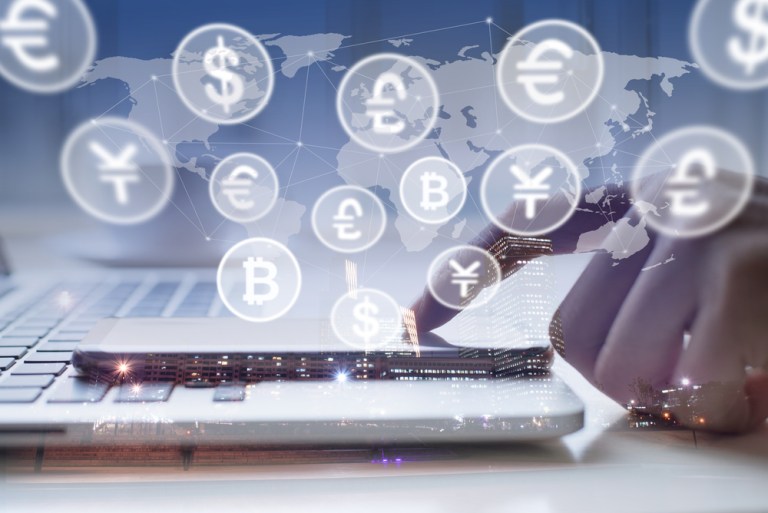
For central banks, when it comes to cryptocurrencies, there’s no central theme.
Whether the advent of digital coins signifies an existential threat to monetary policy at its most basic level – the way it’s been done for, well, centuries – depends on who’s weighing in on the subject.
Some central banks are embracing the concept. Others, not so much.
Yays and Nays
In the most recent news, as noted by CNBC, Switzerland’s central bank is examining how digital currencies might be used in a trading environment, working in tandem with the Swiss stock exchange’s operator SIX Group. The overall theme, reported the site, is to look into how “digital central bank money could be used in the settlement of tokenized assets between market participants.”
In one example, the partnership could involve the issuance of an electronic version of the Swiss franc. SIX, for its part, has reportedly been developing a digital exchange that will use blockchain to underpin those transactions.
The research into digital central bank money will be conducted through a hub set up by the Swiss National Bank (the central bank) in partnership with the Bank for International Settlements (BIS).
It should be noted that the central bank effort differs from what we might deem “private” initiatives such as those tied to Libra, where companies such as Facebook and its associated consortium of more than two dozen companies seek to bring a new crypto to market.
The landscape is becoming a bit more crowded, as central bankers advocate for a look into how digital versions of fiat currencies may be used for all manner of transactions.
In one example from August, Bank of England Governor Mark Carney said the digital currency might be a good idea on a global scale, with a focus on challenging the dollar’s position as the world’s reserve currency. He noted that a digital currency backed by several nations would help change how trade is conducted and could reverse a savings glut that has accompanied the rise of the dollar amid low inflation.
“The dollar’s influence on global financial conditions could similarly decline if a financial architecture developed around the new [digital currency] and it displaced the dollar’s dominance in credit markets,” he said, as quoted by The Guardian. “By reducing the influence of the U.S. on the global financial cycle, this would help reduce the volatility of capital flows to emerging market economies.”
It’s not a surprise that other central banks would want to challenge the dollar’s standing on a global stage, and digital currencies – or baskets of them – may be a way to bring alternative avenues into play. India has reportedly been mulling a bill that could ban cryptos in general, but introduce an official digital currency.
China, of course, through its People’s Bank of China, has been readying its digital version of the renminbi, which would possibly be a shot across the bow against the dollar, but also represents a way to digitize payments in general.
China has said in the past that it aims to “protect monetary sovereignty.” The statement seems a nod to the fact that Libra has awakened at least something of a “fast follower” movement from central banks.
But not all of them, of course.
Russia, for its part, said late this week that the risks seemingly outweigh the benefits.
Elvira Nabiullina, who chairs the Bank of Russia, has said that a national digital currency’s advantage “is not obvious for us… not only for technological reasons, but also because it is [difficult] to really estimate what advantages will the national digital currency give, for example, in comparison with existing electronic non-cash payments. There are many risks, and the advantages may not be obvious enough … are we ready, as a society, to refuse cash?”
The move toward truly cashless, we note, is a long way off, if at all.
What Lies Ahead
But if China is on the path – and Federal Reserve bankers are on record as stating that digital currency is “inevitable,” as Philadelphia Federal Reserve Bank President Patrick Harker said earlier this month – what lies ahead after the two biggest economies in the world throw their respective hats into the digital currency ring?
(It’s interesting to note that Harker has said the U.S. should not be the first of the bigger countries to issue national digital coins, amid technology that has yet to mature, and that the U.S. still has its designation as “reserve currency” – and so the U.S. may be less than a “fast” follower.)
One hint comes as the BIS has said through Augustin Carsten, who serves as general manager, that the digital currency wave may happen “sooner than we think.” As an institutional financial institution owned by the central banks, the BIS is a central point for cooperation.
Libra, flaws and all, may have been the trigger toward such concerted efforts. But the ubiquity of central bank currencies still remains a huge force to be reckoned with. Get ready, then, perhaps, for monetary policy to fully enter the digital age.